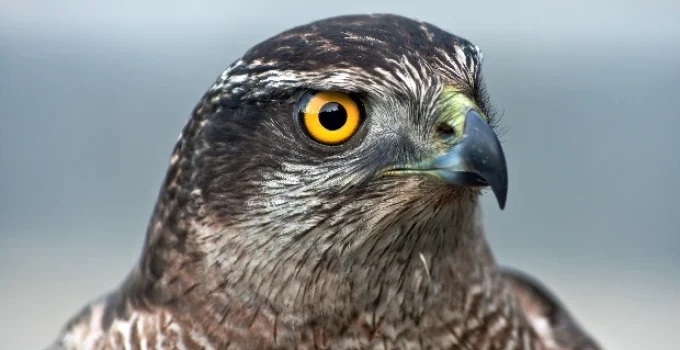Why Are Bird Beaks Shaped So Differently?
Bird beaks come in all shapes and sizes because they are built for specific jobs.
Some birds use their beaks to crack seeds, while others use them to sip nectar, spear fish, or even dig holes. The shape of a bird’s beak tells us a lot about its diet, lifestyle, and habitat.
🔎 | According to the Cornell Lab of Ornithology, a bird’s beak is one of its most important adaptations, evolving to match how it gets food [1].
From the long, curved beak of a hummingbird to the strong, hooked beak of an eagle, each beak is like a tool built for a specific task.
🔎 Dive Deeper
- What Is a Beak, Really?
- Beak Shapes and Their Functions
- How Beaks Help Birds Survive
- Amazing Beak Adaptations
- Fun Fact Table: Beak Types and Jobs
- 🎯 Final Thoughts
- 📚 References
What Is a Beak, Really?
A bird’s beak—also called a bill—is made of bone covered by a tough, keratin layer (the same stuff in your fingernails).
It replaces teeth and works as a multi-tool for eating, cleaning feathers, building nests, and defending territory.
Birds don’t chew. Instead, their beaks grab, crush, tear, or sip depending on what the bird eats.
Beak Shapes and Their Functions
Let’s look at some common beak shapes and what they do:
- Short and Thick Beaks – Found in seed-eating birds like sparrows and finches. These beaks act like nutcrackers to crush hard seeds.
- Long and Thin Beaks – Used by hummingbirds to reach deep into flowers for nectar.
- Sharp and Hooked Beaks – Birds of prey like hawks and owls use these to tear meat.
- Flat and Wide Beaks – Ducks have these for filtering food from water.
- Chisel-like Beaks – Woodpeckers use strong, pointed beaks to drill into tree bark and find insects.
🟪 | Charles Darwin’s study of finches in the Galápagos Islands helped prove evolution by showing how beak shapes adapted to different environments [2].
How Beaks Help Birds Survive
A beak isn’t just for eating—it helps with survival in many ways:
- Feeding Young: Parent birds use their beaks to deliver food to chicks.
- Defending Territory: Some birds use strong beaks to fight off rivals.
- Preening: Birds clean their feathers using their beaks to stay healthy.
- Nesting: Beaks help gather and weave twigs, leaves, and even spider silk.
Different beaks let birds live in different places, from forests and grasslands to oceans and deserts.
Amazing Beak Adaptations
Here are a few incredible examples:
- Pelican: Has a pouch-like beak to scoop fish and drain water.
- Flamingo: Uses its curved beak upside-down to filter tiny shrimp from muddy water.
- Crossbill: Has a twisted-looking beak that lets it pry seeds from pine cones.
- Shoebill Stork: Has a giant, clog-shaped beak to crush large fish like lungfish.
Some birds even use tools with their beaks! For example, New Caledonian crows shape sticks to fish out bugs from tree bark.
Fun Fact Table: Beak Types and Jobs
| Bird | Beak Shape | Main Purpose |
|---|---|---|
| Hummingbird | Long, needle-like | Drinking nectar from flowers |
| Eagle | Hooked and sharp | Tearing meat from prey |
| Duck | Flat and wide | Filtering food from water |
| Woodpecker | Straight and pointed | Drilling wood to find insects |
| Parrot | Curved and strong | Cracking nuts and climbing branches |
| Crossbill | Overlapping tips | Opening pine cones |
🎯 Final Thoughts
Bird beaks are incredible adaptations designed by nature to help birds survive in their own unique ways. Whether it’s sipping nectar, tearing meat, or catching insects, each beak tells a story about how that bird lives. By looking closely at beak shapes, scientists—and students like you—can learn what a bird eats and where it belongs in the world.
So next time you see a bird, take a moment to look at its beak—it’s a clue to its amazing way of life!
📚 References
- Cornell Lab of Ornithology. (2021). All About Bird Beaks. https://www.allaboutbirds.org/news
- Darwin, C. (1859). On the Origin of Species. https://darwin-online.org.uk
- National Audubon Society. (2020). Beaks: The Original Multi-Tool. https://www.audubon.org/news/beaks
- BBC Earth. (2019). Amazing Animal Beaks. https://www.bbcearth.com/news
